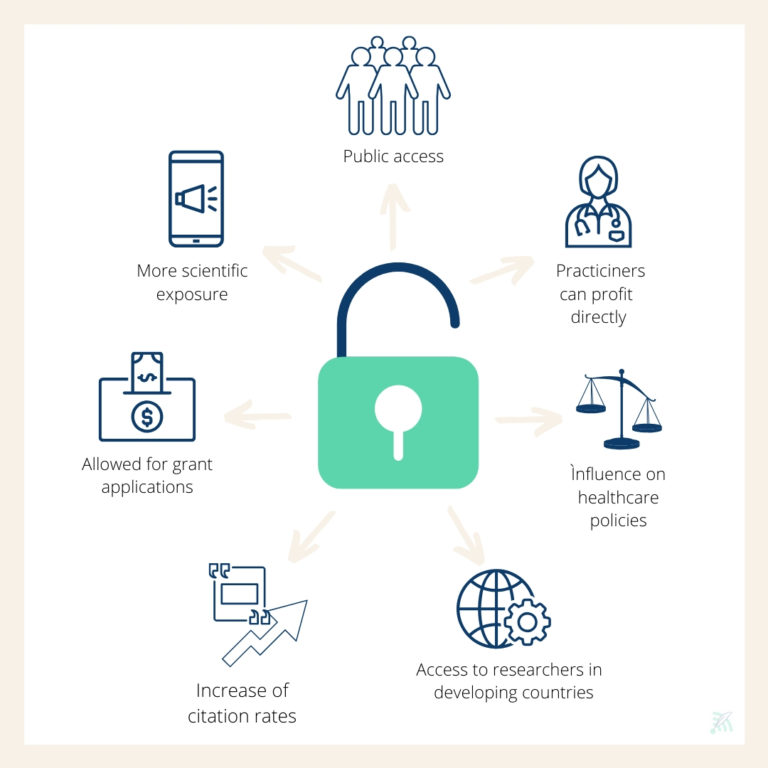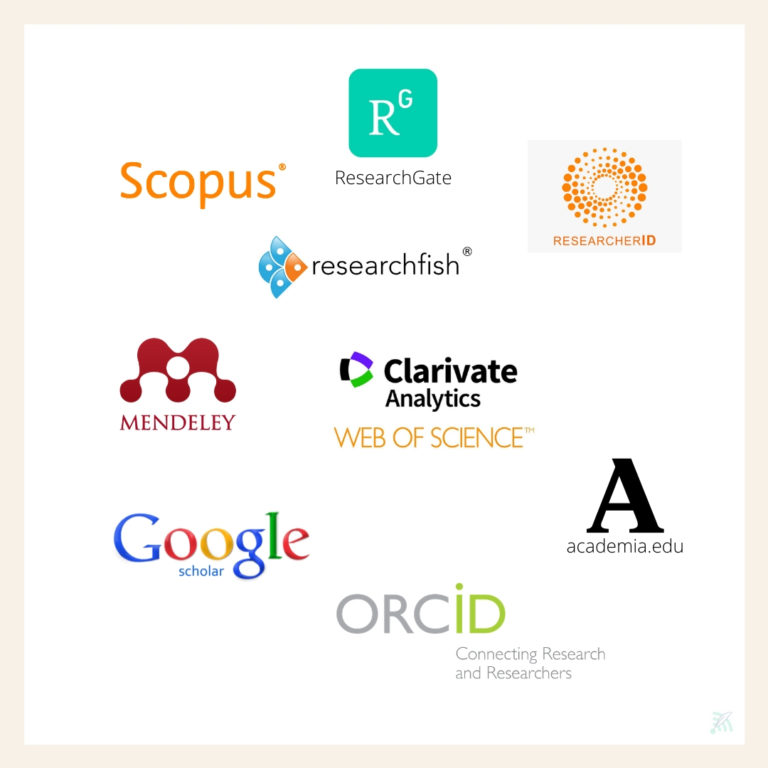If you are thinking about publishing your work, consider writing a simple publishing plan. Why? Because a written strategy will help you reflect on what you want to accomplish by publishing your work. Researchers often forget about strategy because they are so excited about their results and findings that they just want to pack every piece of information into a draft, which sometimes leads them to overlook their key message or audience. A plan will help you focus on the key publication requirements and ensure that all co-authors are in agreement and can contribute.
This post will guide you through important items to consider when establishing a publication plan that will facilitate the choices you make in the dissemination of your research findings. It will also provide winning tips about related considerations that often get neglected. Applying these tips will put you ahead of your competition and allow your publication to have a greater impact.
Where to start with a publication plan
A successful publication plan starts with considering how you want your work to be published. As a stand-alone piece in one format or a series of articles in different formats? In a journal or online? Through a publisher or self-publishing? It is important to weigh your choices and make informed decisions.
Your primary considerations should be your overall strategy and target audience. Strategy? Yes, we know that most scientists shy away from any kind of marketing considerations. Their strategy goes only to the point of which journal to select, but there is more to it. There are alternative ways of publishing, and a sophisticated promotional strategy is necessary to effectively disseminate your findings and make them available to a wide audience, beyond just academia.
Where to publish
An important aspect of every publishing strategy is deciding where to publish. To ensure that you are happy with your possible publication route, it may help to consider this from a few different angles. Ask yourself, what are your motivations to publish? Which publishers and journals will help you meet the objectives of your project? What are the obligations imposed by possible funders or stakeholders? Is there a preexisting publication strategy to adhere to?
It is critical to invest time in properly researching your options upfront. Doing so will make it easier to understand which route will best suit your needs and thus save you time in the long run.
Choosing a medium
Journals
Choosing a journal can be tricky. A handy tip is to search for related topics in places like Google Scholar, Web of Science, Scopus, ScienceDirect, or Pubmed (incl. Medline) and evaluate the results, specifically the selection of journals, publishers, and formats.
Scopus is a particularly great source. It is a major database of peer-reviewed literature in specific disciplines. It features scientific journals, books, and conference proceedings. Scimago Journal Rank, which is based on citation data from Scopus, allows you to choose a subject category, and it will return the average citation impact of recent articles for each journal in that category.
The Directory of Open Access Journals (DOAJ) features around 12,000 trustworthy open access journals, most of which do not charge an article processing charge for the publication of your work. It is easy to browse topics to find suitable open access journals in your discipline. (More on open access publishing later.)
There are also some more nuanced considerations to take into account once a pre-selection has been made. Often it proves beneficial to submit to a journal you usually engage with. Why? Because you have a solid understanding of what that journal covers, and you are likely familiar with its style and tone, which will help you prepare your manuscript.
It may be difficult to choose between a higher-ranking journal and a subject-specific journal. Higher-ranking journals may be tempting, but they have higher rejection rates. In our experience, and given the changing publication landscape that is greatly influenced by the rise of online media, subject-specific journals are becoming equally well respected. Furthermore, they may reach a more targeted audience, generating quality leads, as a digital marketer would say. Weigh the benefits and drawbacks of both options against your objectives, and avoid opting for lesser-known or smaller journals just because you think that your results will get published there more easily.
Alternatives
Getting your work out into the world does not necessarily mean that you need to get a complete journal article or book published. The academic community is beginning to shift away from narrow ideas of what constitutes publication and instead encourage nonstandard and accessible publishing routes that speed up access to research and promote transparency and collaboration within the academic community. Depending on your overall strategy, which determines your distribution criteria, an alternate publication method could be right for you. Some alternatives are:
- Micropublications. In micopublications, only datasets or a small part of your work is shared, which can help draw attention to your research in advance of full-form publication.
- Pre-prints. Many journals allow you to share pre-prints of a paper or an article before peer review that can be deposited in subject repositories (for instance, https://www.preprints.org/, https://www.biorxiv.org/ or https://www.medrxiv.org). Pre-prints are often allowed to be cited and may be allowed to be added to grant applications. Check with your publisher. Lancet offers them as well (https://www.thelancet.com/preprints)
- Post-publication peer review. Post-publication peer review is a new form of publication that is embraced by the academic community to avoid the long waits associated with traditional peer-reviewed journal routes. The F1000 model, where a paper is “published” immediately, is one such example, with peer review happening in “real-time” post-publication. Invited peer-reviewers comment in the form of open reports that are posted, alongside revisions, with the original paper.
Of course, the selection process differs between specialties, but what all have in common is that selection should be done before you start writing your manuscript. Ensure that the selected publishing medium supports the chosen format before you submit. That is, some formats such as opinion pieces or clinical trials may only be accepted by specific journals.
This is why implementing a publication plan, no matter how basic, is a good practice and so important.

Possible advantages of Open Access Publishing
Open access publishing
For the past 10 years, open access publishing has been gaining momentum to increase access to scholarly research. Open access publishing goes hand in hand with the increasing amount of freely available online content on and off academia. Open access articles are accessible to anyone who wishes to read them via the publisher’s website; a subscription is not needed, and there is no paywall. Articles are published normally under a Creative Commons license. Although it is usually possible to share open access research via a subject or institutional repository for no additional charge, regardless of where you publish, opting for immediate open access publishing may be associated with an article processing charge. As most open access journals do not charge this fee, according to the DOAJ, there is certainly a free open access journal that is suitable for your area of research.
There are also large, non-profit publishers such as PLOS ONE and PeerJ that do not charge authors any fees to publish or have a tiered payment system. The goal of these publishers is to help advance scholarly communication and make research freely and publicly available.
Predatory publishers
Sadly, some unethical or even fraudulent publishers try to benefit from researchers. So-called “predatory publishers” can threaten early-career researchers by instituting a fee to publish their work. Predatory journals subvert the peer-review publication system for the sole purpose of financial gain. They are not concerned with the content of the work and have no real incentive to ensure that the work is of high scientific quality or made available and discoverable. For more information, please read the EMWA Joint Position Statement on this subject.
Additional writing tips
Some believe that researchers should write only to publish, that is, to start writing only when a publishing medium has been selected and its methodology can inform the structure and tone of the manuscript. Even if you do not agree with this system or find it hard to implement, you should consider the practicalities and complexities of preparing your work to a publishable level. The following points could be incorporated into your publication plan as part of your checklist.
- Get acquainted with the author instructions for the chosen journal.
- Use the support options the journal may offer.
- When applicable, make clear how your research can be replicated, as this will help increase confidence in your results and enable other research groups to make the best use of your results. Find more information on this topic at the EQUATOR network (for the health sciences) and the Turing Way (for data science).
- Render your manuscript or article visually attractive by structuring your text (using bullet points or knowledge boxes, for example) and adding compelling tables and figures.
- When refining your manuscript, keep in mind to tune it for online use. This not only helps to make it discoverable by your target audience, but it helps establish thought leadership. Make sure that the content is set up for discovery by search engines. This should include using identifiers and keywords throughout your article, including the title and subtitles. Choose an interesting, clear, unique title to attract attention, and map out keywords in the metadata of your article.
- Prepare a graphical abstract and key highlights, as these will facilitate the promotion of your article later on.
Armed with these tips and your experience in writing up your article, you will have laid a solid foundation to get your work published and, most importantly, read. However, you must still think about promotion.
Emphasize the promotion of your research
Nowadays, in a world of a lot of competing content that is easily accessible via the internet, there is no guarantee that relevant audiences will discover your research. Therefore, it is absolutely essential to promote your work throughout the entire publication process.
Sharing a pre-print can spark interest in your work before it is published. Social media announcements can help you reach your target audiences. Compelling visuals or excerpts from your publication can entice interested readers to dig deeper and check out your work in detail. Search engine optimization can facilitate your online discoverability, an important success factor that is still not fully embraced.
There are several options that facilitate identification of your research as your contribution besides your owned channels like website and social media profiles (e.g. LinkedIn, Twitter). Google Scholar, Research Gate, Academia and Mendeley are web-applications you have to set up and manage yourself. Scopus and Web of Science are more commercial options and offer citation metrics. ORCID, Scopus ID and ResearcherID are systems that alow to register via a “bar-code”.

All told, successfully publishing an article is a lot more work- and time-intensive today than it used to be. Therefore, a publication plan is a prerequisite for success. Medtextpert specializes in helping researchers develop publication plans. We are here to help you achieve your publishing goals. We will establish a highly sophisticated promotion strategy for you so that you can focus on what matters—making meaningful contributions to the world of research. Leave it to us to help your research get noticed.





